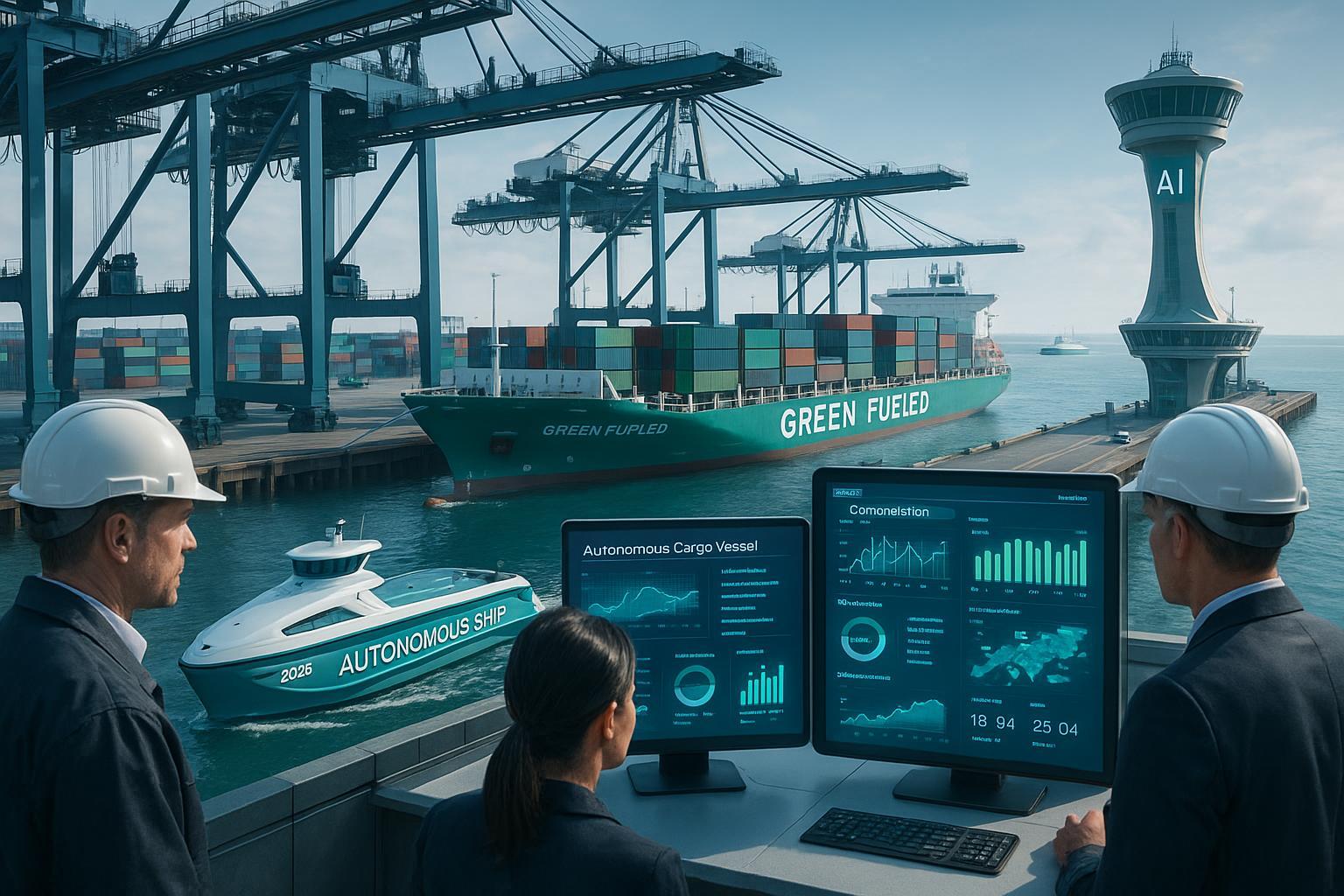Innovative Technologies Transforming Shipping Operations in 2025

Published: August 2025 | Latest update: IMO Mandate Vote October 2025
Disruption at Full Speed: Why 2025 Is the Tipping Point for Shipping Technology
Shipping and logistics operations are facing a sea change as we advance through 2025. Hot off the press, the International Maritime Organization (IMO) is preparing for the world's first industry-wide climate mandate vote this October, proposing enforceable decarbonization standards under MARPOL Annex VI (source). Major multinational carriers like Maersk are on record supporting a global greenhouse gas pricing structure, citing sustainability as now a strategic necessity.
Concurrently, operational breakthroughs—from near-flawless real-time logistics to highly accurate inventory management—are emerging thanks to smart, integrated technologies. Case in point: Belts Logistics attained 100% on-time shipping and 99.98% inventory accuracy for a global supplier by deploying platform-wide process automation (real-world case study). These advances aren’t isolated: the sector is rapidly digitizing, with 70% of shippers and 64% of logistics providers already executing transformation plans (SPGlobal).
Beyond Buzzwords: Integrating AI, SaaS, and Sustainable Propulsion—Operational Impact and Reality
Fast Facts: Adoption & Performance Benchmarks
| Metric | Data (2025) | Source |
|---|---|---|
| AI Usage in U.S. Manufacturing | 51% | DCVelocity |
| Organizations with Digital Plans | 70% shippers, 64% logistics providers | SPGlobal |
| Inventory Accuracy | 99.98% | Belts Logistics Case |
| On-time Shipping | 100% | Belts Logistics Case |
| AI Cited as Critical Trend | 40% of logistics pros | Forto Trend Compass |
| Future AI Essentiality | 80% say by 2030 | Forto Trend Compass |
Integration Realities: Pragmatism Beats Hype
Despite the buzz around AI, cloud SaaS, and green fuel, the real challenge lies beyond pilot projects—it's about orchestrating these technologies into resilient, measurable solutions. Incremental deployment wins: DCVelocity urges leadership to start with targeted pilots, not big-bang disruption, citing data readiness and skills gaps as common hurdles (source).
Adoption Barriers:
- Data quality and integration issues
- Talent shortages in digital and AI skills
- Uncertainties around cost and regulatory ROI
- Workforce transformation and change management
What Works?
- Unified, cross-channel SaaS platforms deliver real-time visibility and coordination
- AI-powered analytics optimize shipment routes, automate decisions, and deliver predictive maintenance
- Green propulsion systems (biofuels, hydrogen) move from pilot to operational—backed by regulation and growing cost parity
Forecast: What Leaders Should Expect by 2030
Industry signals all point to wider, deeper adoption:
- AI and SaaS become indispensable: 80% of supply chain organizations expect AI to be essential by 2030 (Forto Trend Compass).
- Regulation drives action: The IMO climate mandate accelerates transition from marginal green tech pilots to required global solutions—Maersk calls this “strategic inevitability.” (IMO announcement)
- Role evolution: Operational leaders move from manual oversight to digital orchestration and strategic risk management.
Scenario planning is crucial. Success depends on navigating adoption hurdles, quantifying ROI, and institutionalizing resilience.
Executive Roadmap: Action Steps for Leading the Shipping Tech Transition
- Pilot AI-Driven Logistics: Start small, measure ROI, refine processes.
- Evaluate End-to-End SaaS Platforms: Seek systems that unify orders, inventory, and logistics across all channels.
- Prepare for Sustainability Mandates: Begin transition to certified green fuels and propulsion systems.
- Develop Integration Skills: Build digital/AI capabilities internally; bridge workforce gaps with training and strategic hires.
- Measure Everything: Track operational accuracy, cost savings, emissions, and transformation outcomes for ongoing optimization.
- Scenario Planning: Stay agile by revisiting plans as regulation, technology, and market conditions shift.
Leadership Checklist (2025)
- Have you initiated an AI or automation pilot? Document ROI and lessons learned.
- Is your digital logistics platform cross-channel and fully integrated?
- What’s your roadmap to comply with sustainable shipping mandates? Assess costs/benefits.
- Are you investing in digital skills for your team?
- Are you benchmarking performance against leading case studies and industry metrics?
Final Takeaway: Opportunity and Urgency
2025 is not the year for wait-and-see—shipping technology transformation is a matter of competitive survival and climate compliance. Those who proactively unify AI, SaaS, and sustainable propulsion will be best positioned for future-proof resilience and profitability.
Further Reading & Resources:
- World's First Industry-Wide Climate Mandate Could Be Launched with Shipping Vote
- Belts Logistics Case Study
- Forto Trend Compass Survey
- DCVelocity: Unlocking the Potential of AI in Transportation Operations
- SPGlobal Logistics Sector Digital Transformation
This article draws exclusively on data and analysis published from July–August 2025. For the latest updates, follow the cited sources and industry news feeds.